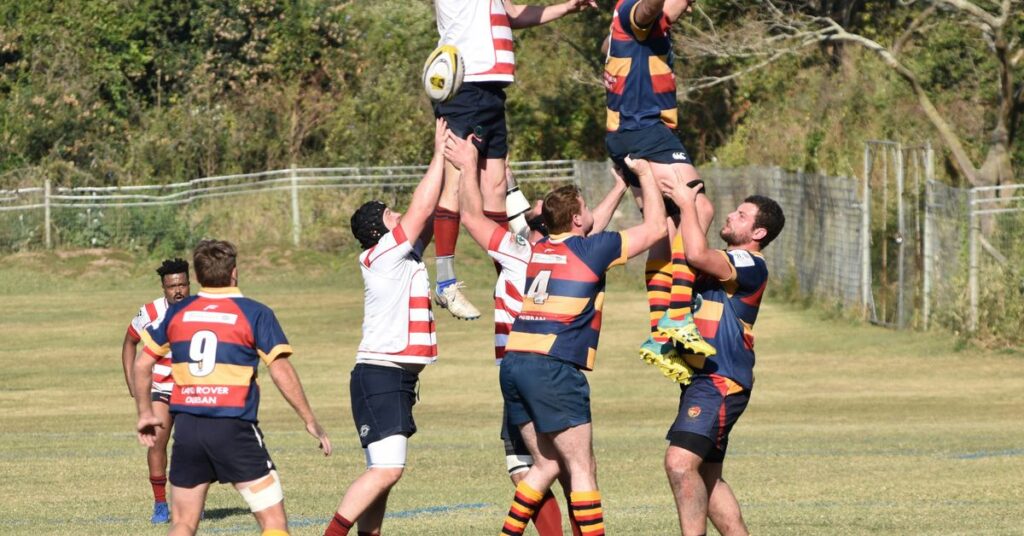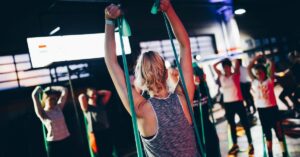Unlock the Hidden Techniques Top Athletes Use for Sports-Specific Conditioning

Unlock the Hidden Techniques Top Athletes Use for Sports-Specific Conditioning
What separates a good athlete from a great one? While talent and hard work are vital, the hidden techniques used by elite performers to hone their craft often remain behind a veil of secrecy. These techniques aren’t just about hitting the gym or running laps; they embody a focused approach to sports-specific conditioning that can transform an athlete’s performance. As someone who has spent years observing and writing about sports, I can tell you—it’s a fascinating world filled with nuances that can make a world of difference.
The Foundation of Sports-Specific Conditioning
At its core, sports-specific conditioning revolves around tailoring workouts to meet the demands of a particular sport. This isn’t merely about building strength or endurance; it’s about developing the precise physical capabilities that athletes need to excel in their disciplines. Think of it as crafting a bespoke suit rather than picking something off the rack.
For instance, a sprinter’s regimen will look dramatically different from that of a marathon runner. The sprinter will focus on explosive power and speed, employing techniques such as plyometrics and short sprints. Conversely, the marathon runner’s training will emphasize endurance and stamina through long-distance runs and aerobic conditioning.
Understanding the Demands of the Sport
One of the first steps in developing a sport-specific conditioning plan is understanding the unique demands of the sport in question. This involves analyzing several key factors:
- Energy Systems: Different sports rely on different energy systems. For example, basketball players often utilize anaerobic energy systems for short bursts of intense activity, while cyclists generally depend on aerobic metabolism for longer rides.
- Movement Patterns: The specific movements required in a sport—whether it’s the explosive jump of a volleyball player or the lateral quickness of a soccer player—must be recognized and trained accordingly.
- Injury Prevention: Understanding common injuries in a sport can help athletes focus on strengthening vulnerable areas. (I remember a conversation with a physical therapist who emphasized how many ACL injuries could be mitigated with proper conditioning.)
Hidden Techniques in Conditioning
Now that we’ve laid the groundwork, let’s delve into some of the less obvious techniques that top athletes employ to gain an edge in their conditioning. These methods may not be mainstream, but they can yield remarkable results.
1. Sport-Specific Drills
Many elite athletes incorporate sport-specific drills into their training. These drills mimic the exact movements they will perform during competitions, which helps in building muscle memory. For example, a football quarterback might practice throwing on the run, while a tennis player may perform drills that simulate match conditions.
Take Serena Williams, for instance. Her training regimen often includes drills that replicate the pressure of match play, allowing her to practice her serve and movement under conditions that closely resemble those of an actual tournament. This method not only prepares her physically but also mentally, ensuring she’s ready for the challenges of competitive play.
2. Unilateral Training
Unilateral training involves training one side of the body independently, which can help in correcting imbalances and enhancing overall strength. It’s particularly beneficial in sports that require a significant amount of lateral movement. (A little birdie told me that many athletes neglect this aspect, but it can be a game changer.)
Consider a basketball player who spends hours shooting from one side of the court. Over time, this can lead to strength and coordination imbalances. By incorporating unilateral exercises like single-leg squats or one-arm dumbbell presses, athletes can ensure both sides of their body develop evenly, reducing the risk of injury and improving performance.
3. Neuromuscular Training
This technique focuses on enhancing the communication between the brain and muscles. It’s not just about lifting weights; it’s about training the nervous system to respond more effectively during athletic movements. Plyometrics, agility drills, and balance exercises fall under this category. The idea is to improve an athlete’s reaction time and coordination.
For example, Olympic sprinters often use reactive drills—like responding to a whistle or light signal—to develop faster starts. This type of conditioning sharpens their ability to execute explosive movements when it matters most. (I once saw a sprinter explode off the blocks in a way that was almost unfair—it was clear they’d spent countless hours honing their neuromuscular connections.)
The Role of Recovery and Nutrition
It’s easy to overlook recovery in the quest for improvement, but let me assure you—how athletes recover can be just as crucial as their training. Top performers often utilize advanced recovery techniques, including:
- Active Recovery: Incorporating low-intensity exercises, such as swimming or cycling, helps flush out lactic acid and promotes circulation.
- Foam Rolling: This self-myofascial release technique aids in muscle recovery and reduces soreness.
- Nutrition: Tailored diets rich in protein, healthy fats, and carbohydrates are vital for recovery. Athletes often work with nutritionists to develop meal plans that support their specific energy needs.
Hydration: The Unsung Hero
Hydration is another key component that athletes often overlook. It’s astonishing how many high-level competitors fail to drink enough water throughout the day. Staying hydrated can significantly affect performance, especially in endurance sports where even a slight dip in hydration can lead to decreased stamina and increased risk of injury.
One memorable interview I had with a professional soccer player revealed that he carried a water bottle everywhere. “It’s not just about drinking after practice,” he said, “it’s about being proactive about hydration all day.” Wise words, indeed.
Mindset and Mental Conditioning
Physical conditioning is undoubtedly critical, but mental conditioning is equally vital. The mental fortitude of athletes often dictates their performance under pressure. Techniques such as visualization, mindfulness, and meditation have gained traction in recent years.
Take Michael Phelps, for example. The Olympic swimmer is known for his visualization techniques—he would mentally rehearse races before they even occurred. This practice not only helps in preparing physically but also instills confidence and reduces anxiety.
Building a Routine
Creating a consistent routine can also significantly enhance an athlete’s mindset. This routine often includes a mix of training, recovery, and mental conditioning techniques, fostering a sense of stability and control. (I remember when I tried to stick to a workout schedule—it worked wonders for my focus, even if it didn’t necessarily lead to Olympic glory!)
Case Studies: Learning from the Best
To truly grasp the nuances of sports-specific conditioning, let’s look at a few case studies of athletes who have excelled through unique conditioning techniques.
Usain Bolt: The Importance of Speed Work
Usain Bolt, the world’s fastest man, is a perfect example of how specialized conditioning can lead to unprecedented success. His training regimen is heavily focused on developing speed and power through targeted sprint drills, explosive starts, and strength training. Bolt’s coaches emphasize the importance of technique in sprinting, ensuring that every movement is efficient and powerful.
Simone Biles: Flexibility and Strength
Gymnastics requires a unique blend of strength, flexibility, and coordination. Simone Biles, often regarded as the greatest gymnast of all time, focuses on conditioning that enhances her explosive power while maintaining her flexibility. Her training includes a mix of gymnastics-specific drills, strength training, and flexibility exercises that prepare her for the rigors of competition.
Embracing Technology in Conditioning
In recent years, technology has played a significant role in sports-specific conditioning. From wearable devices that monitor heart rates and sleep patterns to apps that track performance metrics, athletes have access to data that can inform their training decisions. Many elite athletes now use heart rate monitors and GPS trackers to gather real-time data during workouts, allowing for adjustments on the fly.
For example, a professional cyclist might use a power meter to gauge their output during rides, adjusting their training intensity based on this feedback. It’s like having a personal coach in your pocket, constantly providing insights that can help optimize performance.
Conclusion: The Road Ahead
As we’ve explored, the world of sports-specific conditioning is rich with techniques that can elevate performance to new heights. Whether it’s through tailored drills, a focus on recovery, or the integration of mental conditioning, athletes are constantly seeking ways to refine their edge.
For aspiring athletes, the key takeaway is that conditioning isn’t a one-size-fits-all approach. It requires a deep understanding of the sport, a commitment to tailored training methods, and a willingness to learn from the best. (And maybe a little humor to keep things light.)
Ultimately, unlocking these hidden techniques can be the difference between standing on the podium and watching from the sidelines. So, whether you’re a weekend warrior or an aspiring Olympian, remember: conditioning is not just about getting fit; it’s about getting fit for your sport. And that, my friends, is where the magic truly happens.





